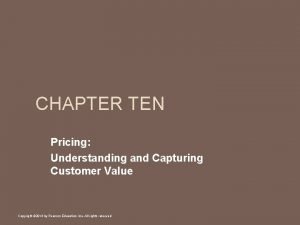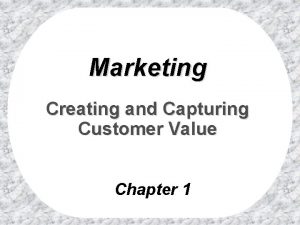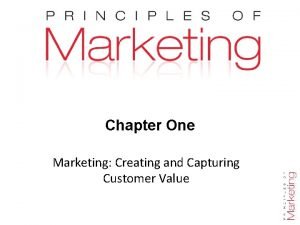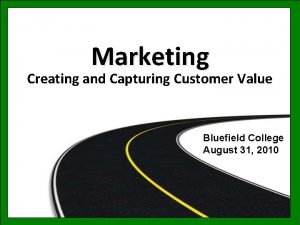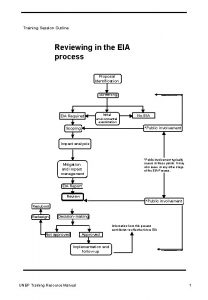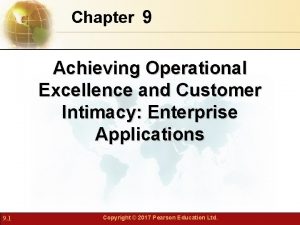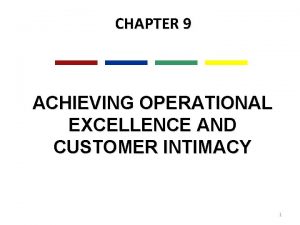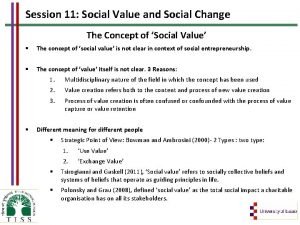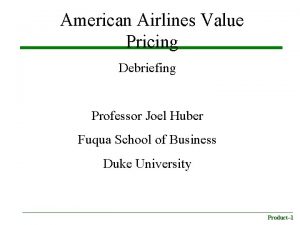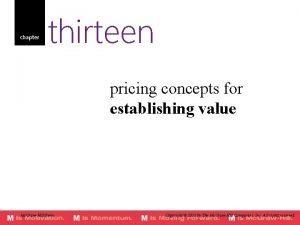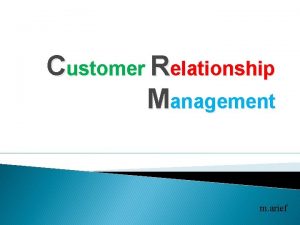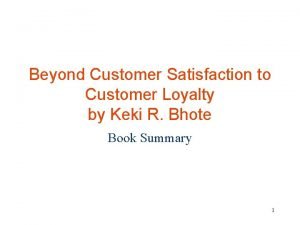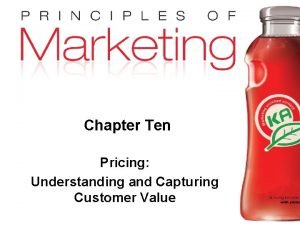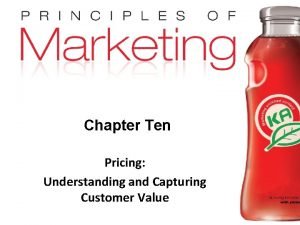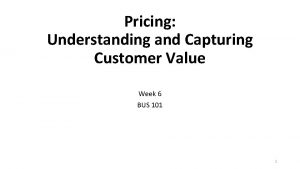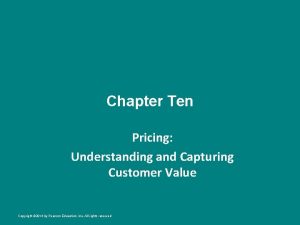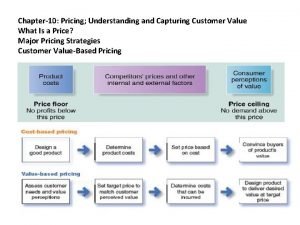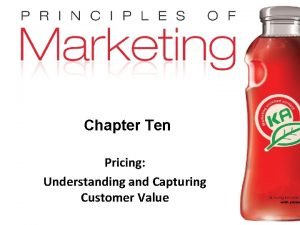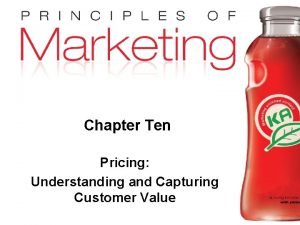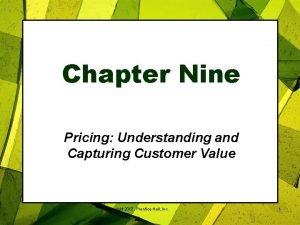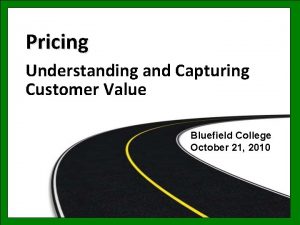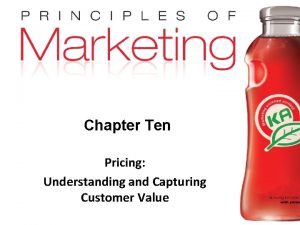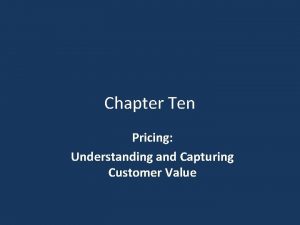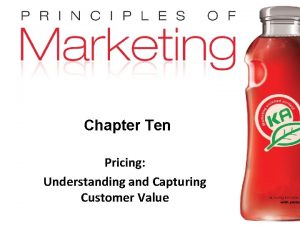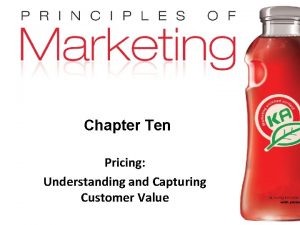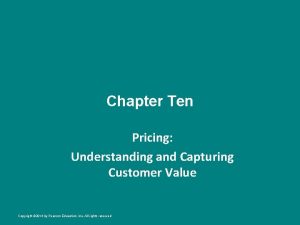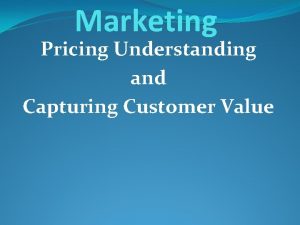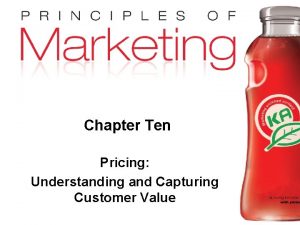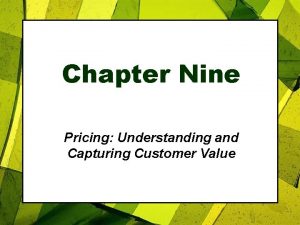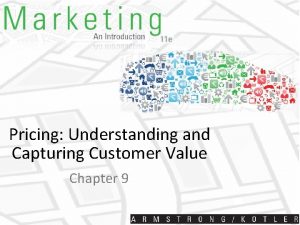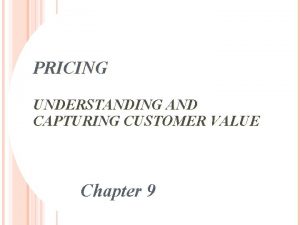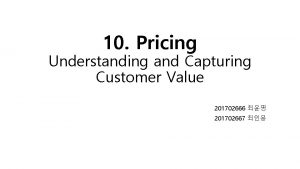Pricing Understanding and Capturing Customer Value Session Outline























- Slides: 23

Pricing: Understanding and Capturing Customer Value

Session Outline v. What Is a Price? v. Factors to Consider when Setting Prices v. Pricing Strategies v. Pricing Process

What Is a Price? The amount of money charged for a product or service, or the sum of the values that customers exchange for the benefits of having or using the product or service.

Factors to Consider when Setting Prices Other internal and external considerations Customer perceptions of value Price Ceiling No demand above this price Marketing strategy, objectives, and mix Nature of the market and demand Competitors’ strategies and prices Product costs Price Floor No profits below this price

Customer Perceptions of Value In the end, the customer will decide whether a product's price is right. Pricing decisions, like other marketing mix decisions, must start with customer value.

Value-Based Pricing Versus Cost-Based Pricing The Wrong Way Design a good product Cost-Based Pricing Setting prices based on the costs for producing, distributing and selling the product plus a fair rate of return for effort and risk. Determine product costs Set price based on cost Convince buyers of product’s value

Value-Based Pricing Versus Cost-Based Pricing The Right Way Assess customer needs and value perceptions Value-based Pricing Setting price based on buyers’ perceptions of value rather than on the seller’s cost. Set target price to match customer perceived value Determine costs that can be incurred Design product to deliver desired value at target price

Good Value Pricing and Value Added Pricing Good Value Pricing Offering just the right combination of quality and good service at a fair price. Value Added Pricing Attaching value added features and services to differentiate a company’s offer and charging higher prices.

Company and Product Costs Cost Based Pricing Setting prices based on the costs for producing, distributing and selling the product plus a fair rate of return for effort and risk. Cost Plus Pricing Adding a standard markup to the cost of the product.

Other Cost Considerations v. Types of Costs v. Costs at Different Levels of Production v. Costs as a Function of Production Experience

Other Internal and External Considerations Affecting Price Decisions v. Overall Marketing Strategy, Objectives and Mix v. Organizational Considerations v. The Market and Demand v. Competitors Strategies and Prices

Pricing Strategies

New-Product Pricing Strategies Market-Skimming Pricing Setting a high price for a new product to skim maximum revenues layer by layer from the segments willing to pay the high price; the company makes fewer but more profitable sales. Market-Penetration Pricing Setting a low price for a new product in order to attract a large number of buyers and a large market share.

Skimming vs Penetration Unit sales Profitability Penetration price Skimming price Time in local market

Pricing Process

Setting the Price (Pricing Process) 1. Selecting the Pricing Objective 2. Determining Demand 3. Estimating Costs 4. Analyzing Competitors’ Costs, Prices, and Offers 5. Selecting a Pricing Method 6. Selecting the Final Price

1. Selecting the Pricing Objectives Survival Current Profit Maximization Marketing Objectives Maximum Market Share Maximum Market Skimming Product Quality Leadership

2. Determining Demand Price Elasticity of Demand Price Rs. Inelastic Demand Elastic Demand 15 10 100 105 Quantity Demanded per Period 50 150 Quantity Demanded per Period

3. Estimating Costs Demand sets a ceiling on the price the company can charge for its product. Costs set the floor. The company wants to charge a price that covers its cost of producing, distributing and selling the product, including a fair return for its effort and risk.

4. Analyzing Competitors’ Costs, Prices and Offers Within the range of possible prices determined by market demand company costs, the firm must take competitors’ costs, prices and possible price reaction into account (reactions/ responses from customers, competitors, distributors, suppliers and even governments).

5. Selecting a Pricing Method High Price (No possible demand at this price) Ceiling Price Customers’ assessment of unique product features Orienting point Competitors’ prices and prices of substitutes Costs Floor Price Low Price (No possible profit at this price) Given the customers’ demand schedule, the cost function and competitors’ prices, the company can now select a price.

6. Selecting the Final Price Pricing methods narrow the range from which the company must select its final price. In selecting that price, the company must consider additional factors, v Impact of Other Marketing Activities v Company Pricing Policies v Gain and Risk Sharing Pricing v Impact of Price on Other Parties

Summary and Conclusions
 Pricing understanding and capturing customer value
Pricing understanding and capturing customer value Capturing value from customers
Capturing value from customers Marketing concept
Marketing concept Core customer and marketplace concepts
Core customer and marketplace concepts Creating value and capturing value
Creating value and capturing value Capturing customer mindset
Capturing customer mindset Capturing customer mindset
Capturing customer mindset Value creation value delivery value capture
Value creation value delivery value capture Training session outline
Training session outline Outline pricing
Outline pricing Sentence outline example
Sentence outline example Customer relationship management and customer intimacy
Customer relationship management and customer intimacy Customer relationship management and customer intimacy
Customer relationship management and customer intimacy Intimacy
Intimacy Nmonetaryvalue
Nmonetaryvalue Pdp staff
Pdp staff Types of social change
Types of social change Lesson outline lesson 1: understanding science answer key
Lesson outline lesson 1: understanding science answer key American airlines value pricing
American airlines value pricing Pricing concepts for establishing value
Pricing concepts for establishing value Customer service training program outline
Customer service training program outline Managing customer information to gain customer insights
Managing customer information to gain customer insights Pengertian customer relationship
Pengertian customer relationship Beyond customer satisfaction to customer loyalty
Beyond customer satisfaction to customer loyalty
